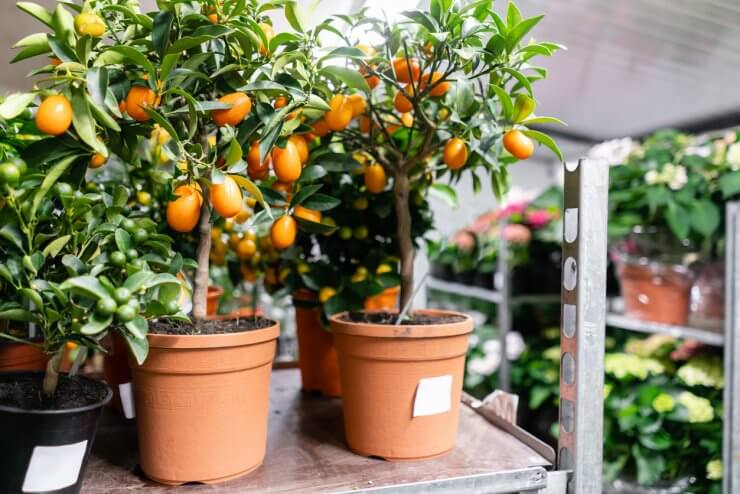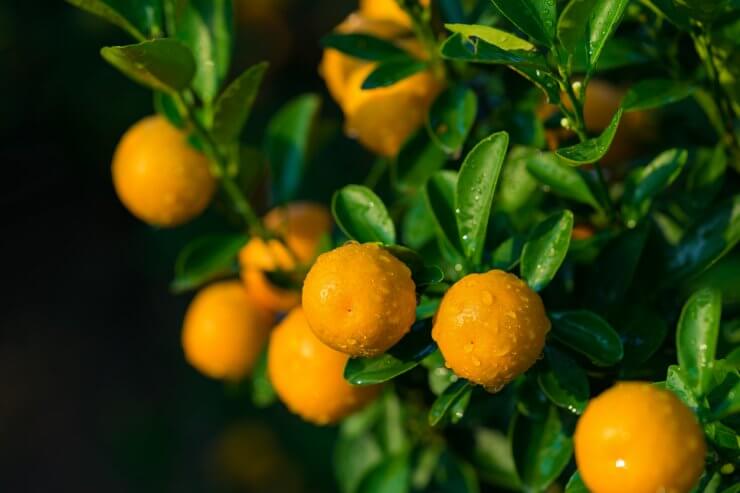
Young kumquat trees in nursery
So, it is possible to grow a kumquat tree from seed, but we strongly recommend you don’t. It may not grow true to seed. It will also take years for you to get a sapling of a sufficient size to be able to support the weight of producing fruit. And if you planted from seed and the tree doesn’t grow true to seed—well, you may be disappointed.
Growing from cuttings is possible, but not a sure thing. Better to explore your small tree options at the local nursery.
Kumquat trees grow best when they’re grafted onto hardy rootstock. Your best bet for a flourishing tree and a successful kumquat harvest is to get yourself a tree. Trees are available in a range of ages and sizes, so you will have the most options—and the highest likelihood of success—if you start with a tree.
The Importance of Pollination
Pollination is essential to fruit growth; it occurs when pollen is transferred from the male part of flowers (anthers) to the female part of the flowers (stigma). Kumquat trees are self-pollinating, which means you only need one tree to get fruit. Now, the tree still needs to get pollinated—by bees, butterflies, or other beneficial insects. If you’re growing your tree in a container indoors, you’re less likely to have butterflies flitting from flower to flower, so you can help your tree along its path to fruiting by acting as its pollinator. Get a small, soft paintbrush to transfer pollen from flower to flower.
Consider your climate

Kumquat in sun after rain
Consider your garden microclimate before you choose a kumquat tree. If you’re in a zone where you can plant the tree outdoors, do you have the right spot where the tree will get a lot of sun? Kumquat trees tolerate a wide range of soils, but they’re big on getting sun: eight to 10 hours a day is their preference.
The ideal states for planting kumquats in the ground are Arizona, California, Florida, Louisiana, and South Texas. If you live in any of those states, you’ll need to buy your kumquat trees from a local grower; growers out of state cannot ship kumquat trees to you because of USDA regulations.
If you live beyond the outdoor kumquat zone, container growing is absolutely an option. It’s ideal if you can move the tree outside during warmer weather and bring it in if there’s a risk of temps dropping below 18 degrees F.
The flavor and growing style of kumquat trees is fairly similar, so your main criteria may be what’s available in your area or which growers can ship trees to you.
Have you ever tried growing kumquats from seed? How did it turn out? Have you had success with cuttings? If you chose a young tree, how big a tree did you start with? Did you plant it in the ground or in a container? Please tell us how you get your kumquat trees started.


 Previous
Previous

